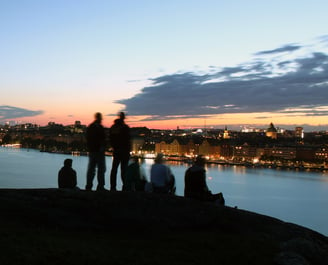The Age of Ambient Music: A Journey into the World of Sound Atmosphere
In this article, we will explore the history of ambient music, its characteristics, and its impact on culture. We will also introduce you to some of the most well-known artists of the genre.
ABOUT MUSIC
9/20/20232 min read


Introduction to Ambient Music
Ambient music is a genre of electronic music characterized by the use of long, flowing, often atmospheric sounds that create a sense of space and tranquility. It is often used as background music, but it can also be enjoyed as a stand-alone genre.
Origins of Ambient Music
Ambient music originated in the early 1970s in the United Kingdom and the United States. Some of its early pioneers include Brian Eno, Kevin Ayers, Michael Nyman, and Edgard Varèse.
Characteristics of Ambient Music
Ambient music has the following characteristics:
Long, flowing sounds: Ambient music often consists of long, flowing chords and melodies that create a sense of calm and relaxation.
Atmospheric textures: Ambient music often uses atmospheric sounds, such as natural sounds and electronic effects, to create atmosphere and a sense of space.
Unclear structure: Ambient music often has an unclear structure and does not follow traditional musical forms.
Background music: Ambient music is often used as background music that helps people relax and focus.
Brian Eno
Brian Eno, one of the pioneers of ambient music, is one of the most influential composers and producers in the world. His works, such as the album "Ambient 1: Music for Airports" (1978), are classics of the genre.
Development of Ambient Music
Ambient music continued to develop and evolve after its inception in the early 1970s. In the 1980s, artists such as Aphex Twin, The Orb, and Brian Eno joined the genre. These artists experimented with different styles and sounds, leading to the emergence of new subgenres of ambient, such as techno-ambient and new-age. In the 1990s, ambient music continued to develop, and new styles emerged, such as ambient dub and ambient house. These styles combined elements of ambient with other genres of electronic music, such as dub and house.
In the 21st century, ambient music continues to be a popular genre. It is used in various fields, such as film, television, advertising, and therapy.
Brian Eno in:
Eno often uses natural sounds and electronic effects to create atmospheric textures. He is also known for his experimental approach to music.
Copyright © 2022 Synergy. All rights reserved.
Join Our Music Community
GET UPDATES IN YOUR MAILBOX
